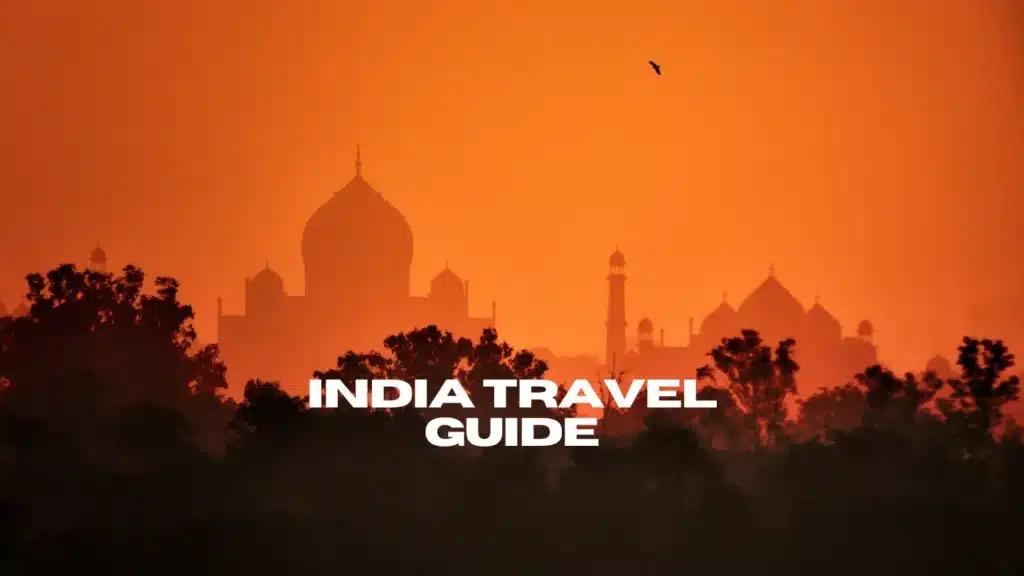India is the kind of place that rearranges your idea of travel. One hour you’re sipping chai outside a Mughal-era fort; the next you’re gliding through coconut-lined backwaters or winding toward snow-dusted Himalayan passes. This India Travel Guide is your friendly compass through it all—designed to help you plan with confidence and still leave room for serendipity.
This guide explains India’s regions, best times to visit, essential entry steps, and transportation options. Find sample itineraries, budget and safety tips, and key travel tools, plus links to in-depth destination guides for further exploration.
“Bookmark this guide and explore our detailed destination articles linked below.”
Table of Contents
Why Visit India
Ask any seasoned traveler why India is special, and you’ll rarely hear the same answer twice. That’s because India isn’t just one destination—it’s a tapestry of experiences that change from state to state, sometimes even village to village.
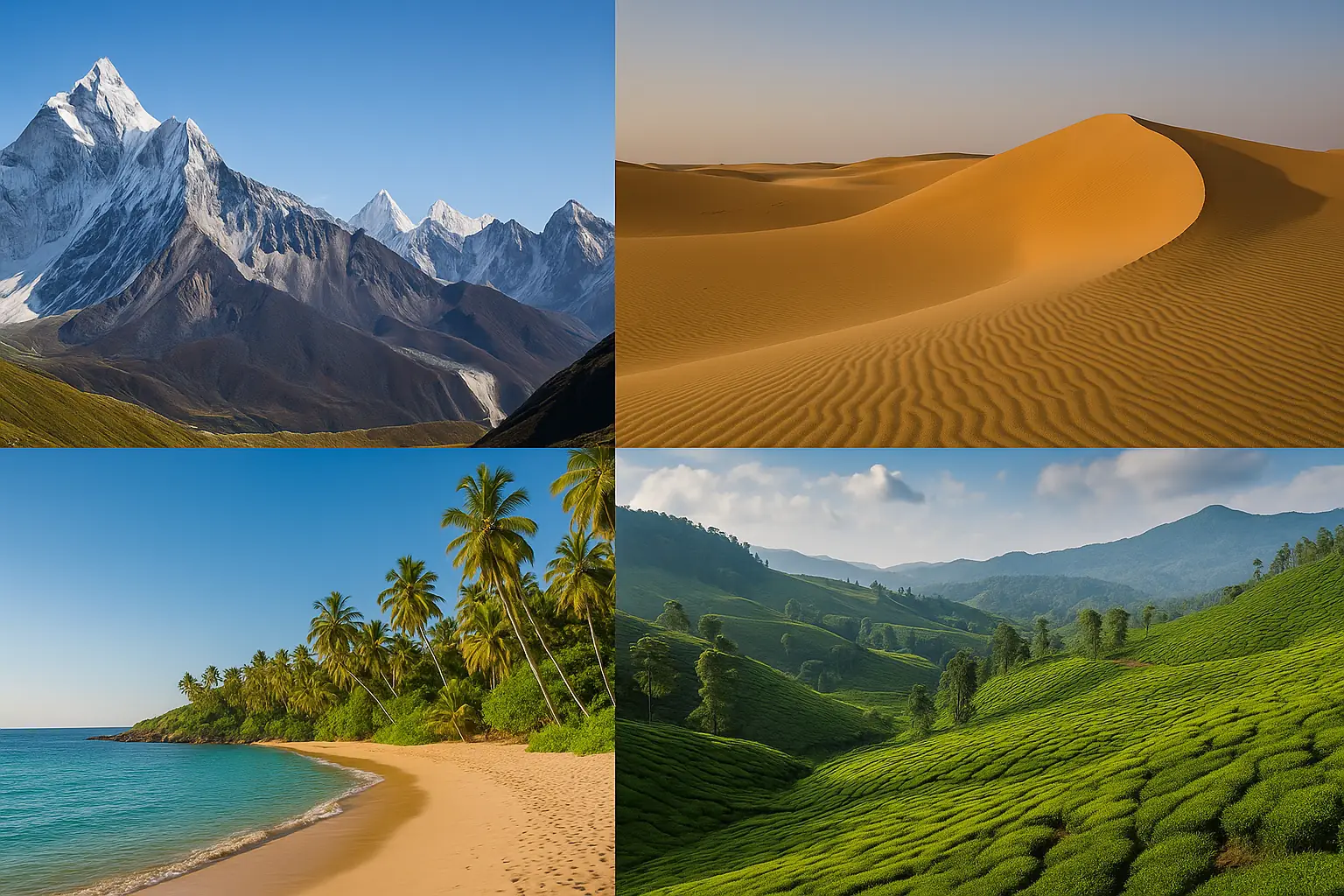
Diversity of Landscapes
India’s geography is like a miniature world map. In the north, the Himalayas rise with snow-capped peaks perfect for trekking and adventure. Travel west and you’ll find the golden sands of the Thar Desert, dotted with camels and historic forts. Head south for palm-fringed beaches or lose yourself in the lush jungles of Madhya Pradesh and the Northeast, home to tigers, elephants, and rare bird species. No matter your travel style—mountain lover, beach bum, or wildlife enthusiast—India has a corner that feels made for you.
Rich History & Cultural Heritage
India’s story spans thousands of years, and you can see it in every stone, temple, and tradition. From the ancient ruins of Hampi to the marble perfection of the Taj Mahal, each region offers a unique chapter of history. The country’s UNESCO World Heritage Sites number in the dozens, covering everything from medieval forts to natural wonders. Culture isn’t locked away in museums here—it’s alive in colorful markets, folk dances, and daily rituals.
Affordable Travel with Luxury Options
India is one of the rare places where you can travel on a shoestring or indulge in luxury—often in the same trip. Backpackers can survive comfortably on a modest budget, while those seeking opulence can book heritage palaces, luxury trains, and high-end wellness retreats. This affordability means you can travel longer and explore more.
A Land of Living Traditions
Perhaps the most magical reason to visit India is its calendar of festivals. Almost every month has a reason to celebrate—whether it’s the riot of colors during Holi, the golden lights of Diwali, or the spiritual gatherings of the Kumbh Mela. These celebrations aren’t just spectacles; they’re invitations into the heart of local life. (For a full calendar, see our Festivals of India Travel Guide)
In short, India stirs your senses, challenges perceptions, and leaves you with lifelong stories. Whether seeking history, adventure, relaxation, or culture, your reasons to visit are endless.

Buy NOMATIC 20L Anti Theft Travel Backpack
Best Time to Visit India
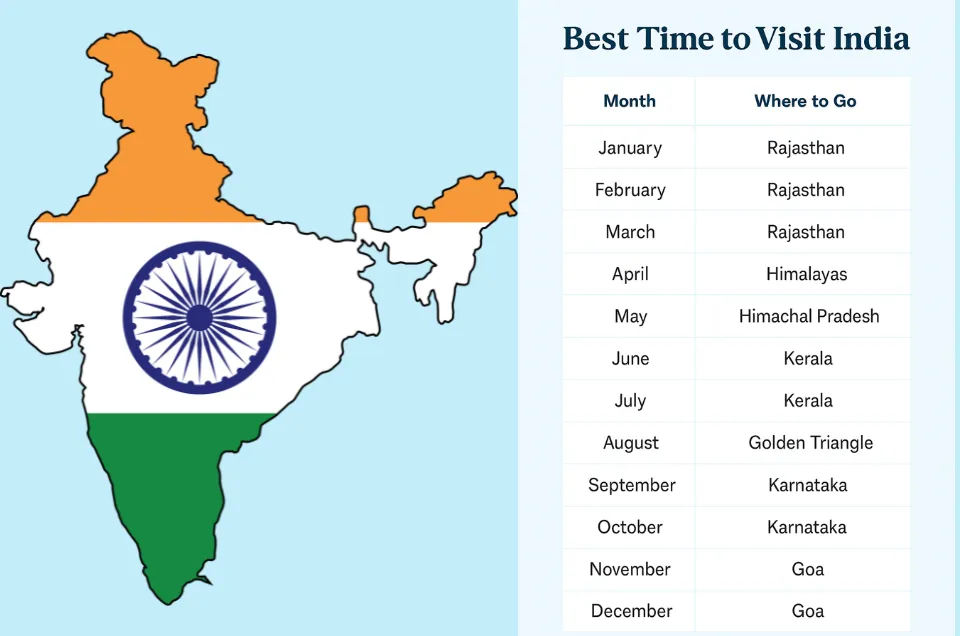
Because India stretches from the snowy Himalayas in the north to the tropical coasts in the south, the “best” time to visit depends on where you’re going and what you want to do. The country experiences three main seasons—winter, summer, and monsoon—each offering its own travel rewards.
Winter (October – March)
Winter is the most popular travel season, with cooler, drier weather across most of India. This is the ideal time to explore North India—the Golden Triangle (Delhi, Agra, Jaipur), Rajasthan’s palaces and deserts, and spiritual hubs like Varanasi. It’s also perfect for South India’s beaches and Kerala’s backwaters, since the humidity is lower.
💡 Tip: Book early, as prices peak during Christmas, New Year, and major festivals.
Summer (April – June)
Summer in much of India can be very hot, especially in the central and northern plains, with temperatures soaring above 40°C (104°F). However, this is the perfect time to explore hill stations in North India, such as Shimla and Manali for their colonial charm, Darjeeling for its tea plantations, and the Kashmir and Ladakh regions for their high-altitude landscapes and adventure opportunities. The Himalayas are at their most accessible for trekking.
💡 Tip: This is also a good season for wildlife safaris in national parks, as animals gather near water sources.
Monsoon (July – September)
The monsoon rains bring lush greenery, cooler temperatures, and fewer tourists. While heavy rains can disrupt travel in some areas, the monsoon transforms Kerala’s backwaters, Western Ghats’ hills, and South India’s spice plantations into vibrant green retreats. Hill stations such as Munnar and Coorg gain dramatic cloudscapes, while Northeast India’s valleys become particularly scenic. This is also the season for waterfalls and striking natural landscapes.
💡 Tip: If you’re into photography or love nature, the monsoon season is an underrated gem.

Best Travel Size Sunscreen
Best Time for Festivals
Some of India’s most vibrant festivals fall during the cooler months. Diwali (October/November) lights up cities with candles and fireworks, while Holi (February/March) turns the streets into a riot of colors. The monsoon season has its own charm, marked by festivals like Onam in Kerala. For a detailed festival calendar, check our Seasonal Travel in India guide.
In short:
If you want cool, pleasant weather and a festival-rich experience, aim for October to March. For mountains and treks, go in summer. And if you don’t mind rain, the monsoon months offer some of the most beautiful, uncrowded landscapes you’ll ever see.
For more on when and where to go with the seasons, continue to our guide on Seasonal Travel in India.
Entry Requirements & Visa Guide
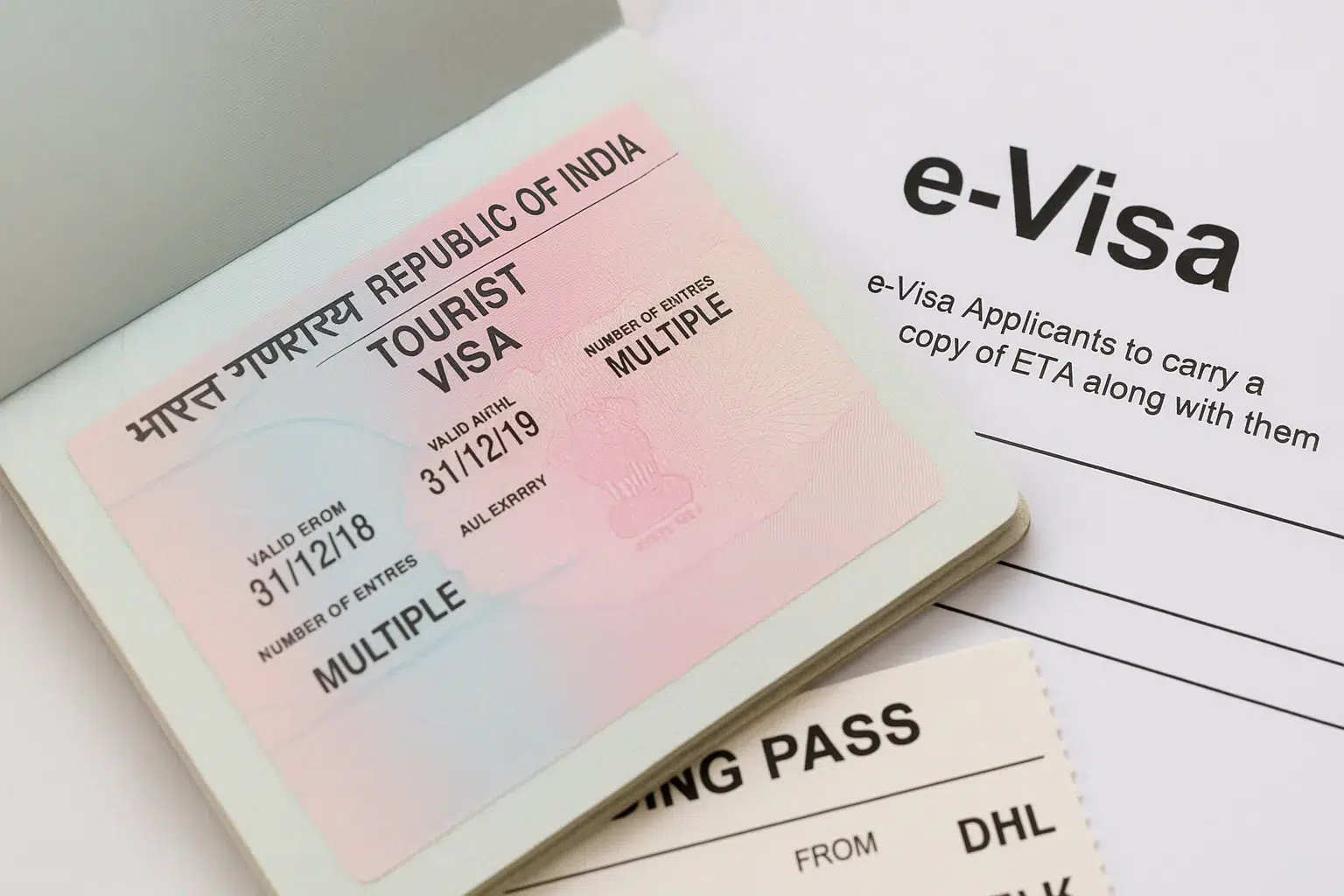
For most travelers, visiting India requires obtaining a tourist visa in advance. Fortunately, the process is now much easier, especially with the introduction of the e-Visa system.
Types of Visas Available for Tourists
- E-Tourist Visa (e-Visa) – Available to citizens of over 160 countries, valid for short visits (30 or 90 days, depending on nationality). Ideal for holidays, short business trips, or attending events.
- Regular Tourist Visa – Issued through Indian embassies or consulates for longer stays or multiple visits. Validity can range from 6 months to 10 years for some nationalities.
- Special Permits – Required for certain protected or restricted regions, such as Arunachal Pradesh, Nagaland, and parts of Ladakh.
The E-Visa Process
- Apply Online via the official government portal: indianvisaonline.gov.in
- Upload Documents – You’ll need a clear passport scan (valid for at least 6 months from the date of arrival), a passport-sized photo, and your travel details.
- Pay the Fee – The costs vary from approximately $25 to $80 USD, depending on nationality and visa type.
- Wait for Approval – Most e-Visas are processed within 3–5 working days.
- Receive Your ETA – You’ll receive an Electronic Travel Authorization (ETA) via email, which you must present upon arrival.
💡 Tip: Only apply through the official government website—there are many unofficial sites that charge extra fees.

Buy Garnier Travel Size Shampoo
When to Apply
- E-Visa: You can apply for most short-term e-Visas up to 30 days before travel. To allow sufficient processing time, please apply at least two weeks prior to your trip, as approval typically takes 3–5 working days.
- Regular Tourist Visa: For embassy or consulate applications, please apply at least 4–6 weeks prior to your travel dates to allow sufficient processing time, as this process takes longer than e-Visas.
- For peak travel seasons (October–March), plan to apply even earlier than suggested above to avoid any visa processing delays.
On Arrival
- You must have a printed copy of your ETA and your passport ready for verification.
- Immigration may ask for proof of onward travel and accommodation details.
For more details—including step-by-step application screenshots, country-specific fees, and helpful tips—see our full Visa & Entry Requirements for India guide.
A little planning ensures a smooth arrival, allowing you to focus on enjoying your first taste of India rather than dealing with paperwork.
Getting Around India
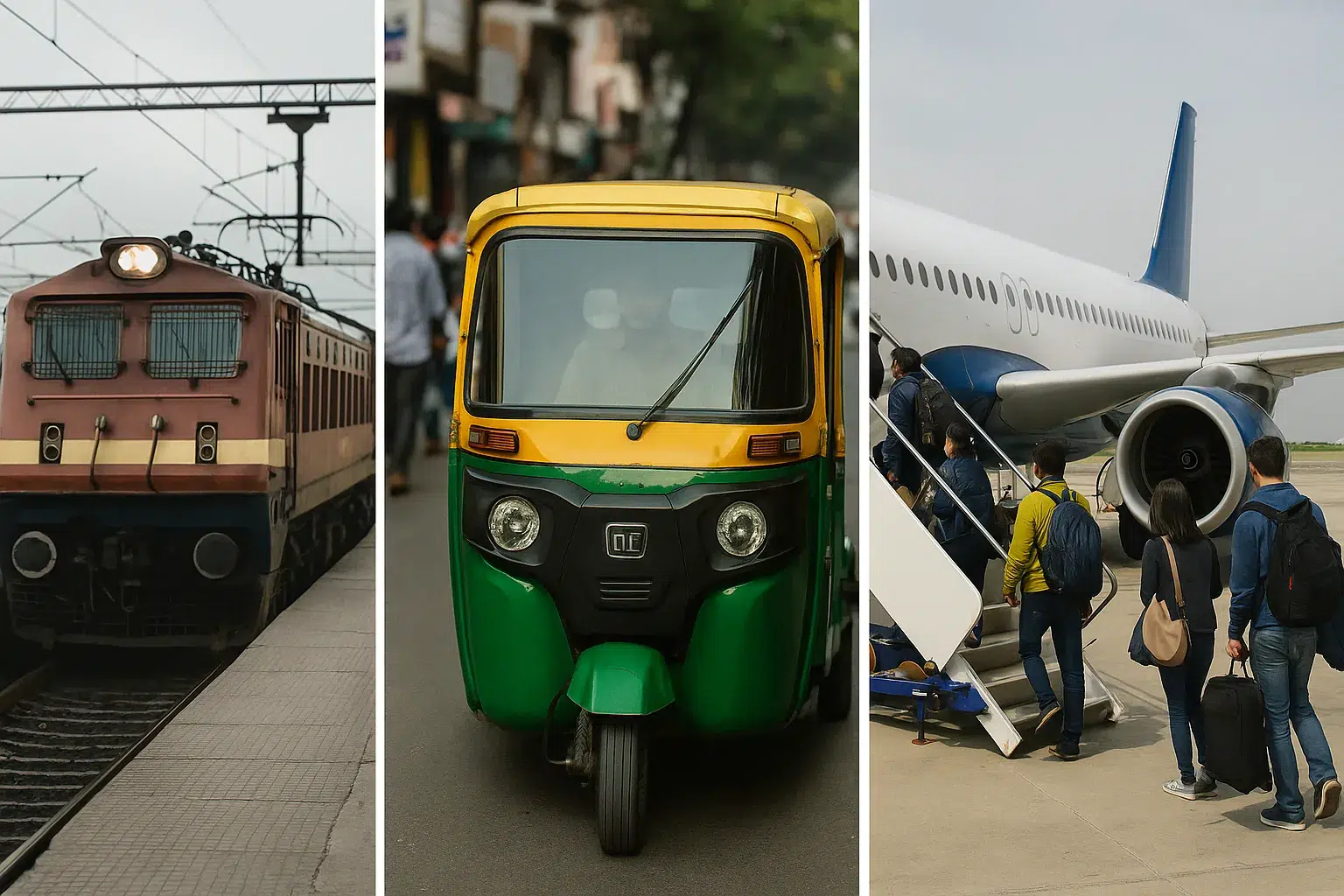
India’s vast size means that how you travel can shape your entire experience. From slow scenic train rides to quick domestic flights and colorful tuk-tuk rides, transport in India is as much a part of the journey as the destinations themselves.
Trains
India’s rail network is one of the largest in the world, carrying millions daily. Trains are not only a practical way to move between cities, but also a cultural experience—you’ll share chai with fellow passengers, see the countryside up close, and enjoy a more relaxed pace.
- How to Book: The easiest way is via the official IRCTC website or apps like MakeMyTrip and Cleartrip (which simplify payment for foreign cards).
- Best Scenic Routes: The Kalka–Shimla toy train winds through pine-covered hills; the Darjeeling Himalayan Railway offers postcard-worthy views; and the Konkan Railway hugs the western coastline.
- Tip: Book tickets in advance, especially for popular routes and during peak festival seasons.
(For more inspiration, see our Best Train Journeys in India guide.)
Flights
For long distances, especially between the far north and south, domestic flights are often the most efficient mode of transportation. India’s budget airlines—like IndiGo, SpiceJet, and Akasa Air—offer competitive fares if you book early.
- Tip: Sign up for fare alerts; flash sales can make flying almost as cheap as the train.
- Most major cities have airports, and routes between tourist hubs are well-served.
Buses
India has both state-run and private luxury buses that connect cities, towns, and even remote areas. Private operators, such as RedBus, offer sleeper coaches, air conditioning, and online booking.
- A great option for regions without train service (e.g., parts of Himachal Pradesh and Northeast India).
- Overnight buses save time and the cost of a night’s accommodation.
Local Transport
Once in a city, you have a mix of options:
- Tuk-tuks (Auto Rickshaws) – Fun and cheap for short distances, but agree on a price before starting or ask for the meter.
- Metro – Available in cities like Delhi, Mumbai, and Bangalore; clean, fast, and affordable.
- App-Based Cabs – Ola and Uber work well in most cities and are more reliable than hailing taxis on the street.
Travel in India is diverse, affordable, and memorable. Choose transport wisely to maximize your experience.

Buy Digital Camera, FHD 1080P
Regional Highlights
India is not one destination—it’s a collection of distinct worlds, each with its own personality, landscapes, flavors, and traditions. Whether you’re chasing Himalayan peaks, golden deserts, tropical backwaters, or lush tea gardens, every region offers something unforgettable.

North India: Himalayas, Golden Triangle, Rajasthan
(See our full North India Travel Guide for more details.)
- The Himalayas – Stretching across Himachal Pradesh, Uttarakhand, Jammu & Kashmir, and Ladakh, this region offers breathtaking trekking routes, high-altitude monasteries, and serene mountain towns. Popular spots include Leh for its stark, otherworldly landscapes; Rishikesh for yoga by the Ganges; and Manali for alpine adventures.
- The Golden Triangle – Delhi, Agra, and Jaipur forms India’s best-known travel circuit, blending history, architecture, and culture.
- Delhi blends Mughal monuments, colonial architecture, and modern energy.
- Agra is home to the Taj Mahal and other Mughal treasures.
- Jaipur, known as the Pink City, boasts ornate palaces, forts, and vibrant markets.
- Rajasthan – Known for its royal palaces, desert forts, and camel safaris. Visit Jodhpur’s blue old city, Udaipur’s romantic lakes, and Jaisalmer’s golden desert citadel.
South India: Kerala Backwaters, Tamil Nadu Temples, Goa Beaches
(See our full South India Travel Guide for more details.)
- Kerala – A lush paradise famous for its palm-fringed backwaters, houseboat cruises, and Ayurvedic retreats. Munnar’s tea plantations and Periyar’s wildlife sanctuary add to the variety.
- Tamil Nadu – Home to towering Dravidian-style temples like the Meenakshi Amman Temple in Madurai and the Shore Temple in Mamallapuram. Chennai offers a vibrant cultural scene and a gateway to the Coromandel Coast.
- Goa – Known for its golden beaches, Portuguese heritage, and lively nightlife. While North Goa buzzes with energy, South Goa offers quieter, more secluded stretches of sand.
East India: Kolkata, Odisha Temples, Tea Estates in Assam
- Kolkata – Once the capital of British India, it’s rich in colonial architecture, art, and literature. Known for Durga Puja celebrations, street food, and its intellectual vibe.
- Odisha – The state’s Konark Sun Temple and Jagannath Temple in Puri are major cultural landmarks. The coastal areas also offer serene beaches and traditional crafts.
- Assam – Famous for its tea gardens and Kaziranga National Park, home to the one-horned rhinoceros.
West India: Mumbai, Gujarat Heritage, Beaches
- Mumbai – India’s financial and entertainment hub, where Bollywood meets street food and Victorian-era architecture. Don’t miss Marine Drive at sunset and the Gateway of India.
- Gujarat – Rich in history and culture, with attractions like Gir National Park (Asiatic lions), the Rann of Kutch salt desert, and UNESCO-listed Champaner-Pavagadh Archaeological Park.
- Beaches – Maharashtra’s Konkan coast offers pristine beaches, such as Ganpatipule and Tarkarli, which are often overlooked by international travelers.
Northeast India: Meghalaya, Arunachal Pradesh, Sikkim
- Meghalaya – Known as the “Abode of Clouds,” it’s home to living root bridges, rolling hills, and Asia’s cleanest village, Mawlynnong. Cherrapunji and Dawki Lake are highlights.
- Arunachal Pradesh – A remote and culturally diverse state with Himalayan peaks, Tibetan monasteries, and tribal festivals. Tawang Monastery is a must-visit.
- Sikkim – A tiny state with big beauty: snow-capped mountains, Buddhist monasteries, and adventure treks. Gangtok is a good base for exploring nearby lakes and viewpoints.
In short:
India’s regions each offer unique landscapes, cultures, and memories. Stay in one area or explore several—either way, a vibrant journey awaits.

Buy INIU Portable Charger, Slimmest 10000mAh Power Bank
Suggested Itineraries
India can feel overwhelming at first glance—there’s so much to see that it’s tempting to try to cover everything. The truth? Less is more. Choosing a few regions and exploring them deeply will give you a richer, more memorable experience than rushing through dozens of cities.
Here are three sample itineraries to get you started—one week, two weeks, and one month—each outlining a logical route, the main cities and sights you’ll visit, and ways to experience India’s culture, history, nature, and relaxation in each region.
1 Week: The Golden Triangle
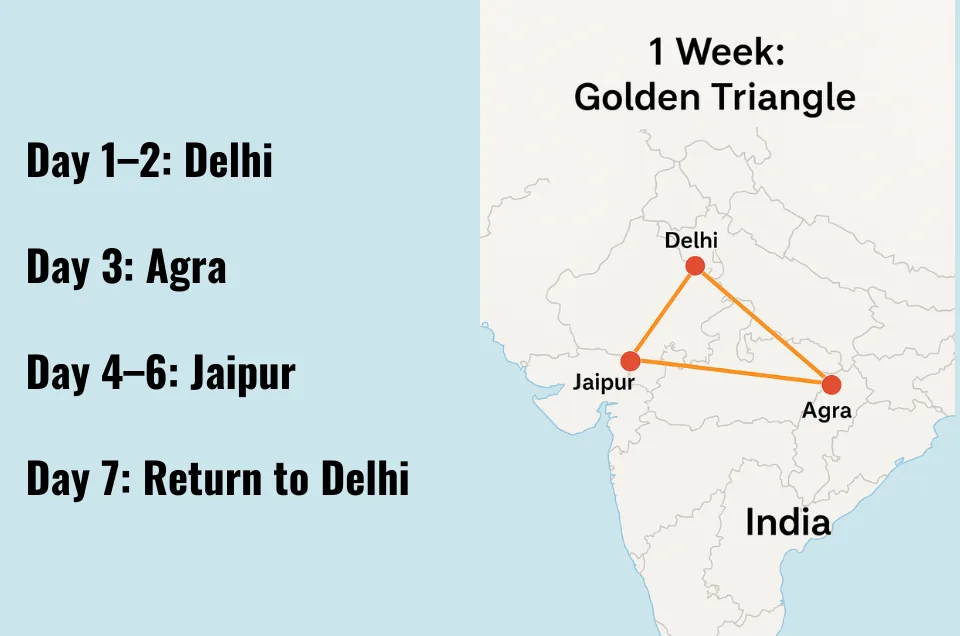
Best for: First-time visitors who want a concentrated dose of India’s culture and history.
Route: Delhi → Agra → Jaipur → Delhi
Day 1–2: Delhi
- Explore Old Delhi’s chaotic charm—Jama Masjid, Chandni Chowk markets, and street food tours.
- Visit New Delhi’s colonial architecture: India Gate, Humayun’s Tomb, and Qutub Minar.
Day 3: Agra
- Sunrise at the Taj Mahal—an absolute must.
- Visit Agra Fort and the lesser-known but beautiful Itimad-ud-Daulah (“Baby Taj”).
Day 4–6: Jaipur
- Tour Amber Fort, Hawa Mahal (Palace of Winds), and the City Palace.
- Shop for handicrafts in Johari Bazaar.
- Take a cooking class to learn traditional Rajasthani dishes.
Day 7: Return to Delhi
- Last-minute shopping or a visit to Lodhi Gardens before departure.
(Full route guide: Golden Triangle India Travel Itinerary)
2 Weeks: Rajasthan + North India Highlights

Best for: Travelers seeking a blend of royal palaces, deserts, and spiritual experiences.
Route: Delhi → Agra → Jaipur → Jodhpur → Jaisalmer → Udaipur → Varanasi → Delhi
Days 1–6: Golden Triangle (as above)
Days 7–8: Jodhpur
- Explore the towering Mehrangarh Fort and the blue-painted old city.
- Sample spicy street snacks, such as mirchi vada.
Days 9–10: Jaisalmer
- Discover the golden sandstone Jaisalmer Fort.
- Go on a camel safari in the Thar Desert, with an overnight in the dunes.
Days 11–12: Udaipur
- Known as the “City of Lakes,” visit the City Palace and enjoy boat rides on Lake Pichola.
Days 13–14: Varanasi
- Witness sunrise boat rides on the Ganges.
- Experience evening aarti (prayer ceremony) at Dashashwamedh Ghat.
1 Month: North + South India Highlights
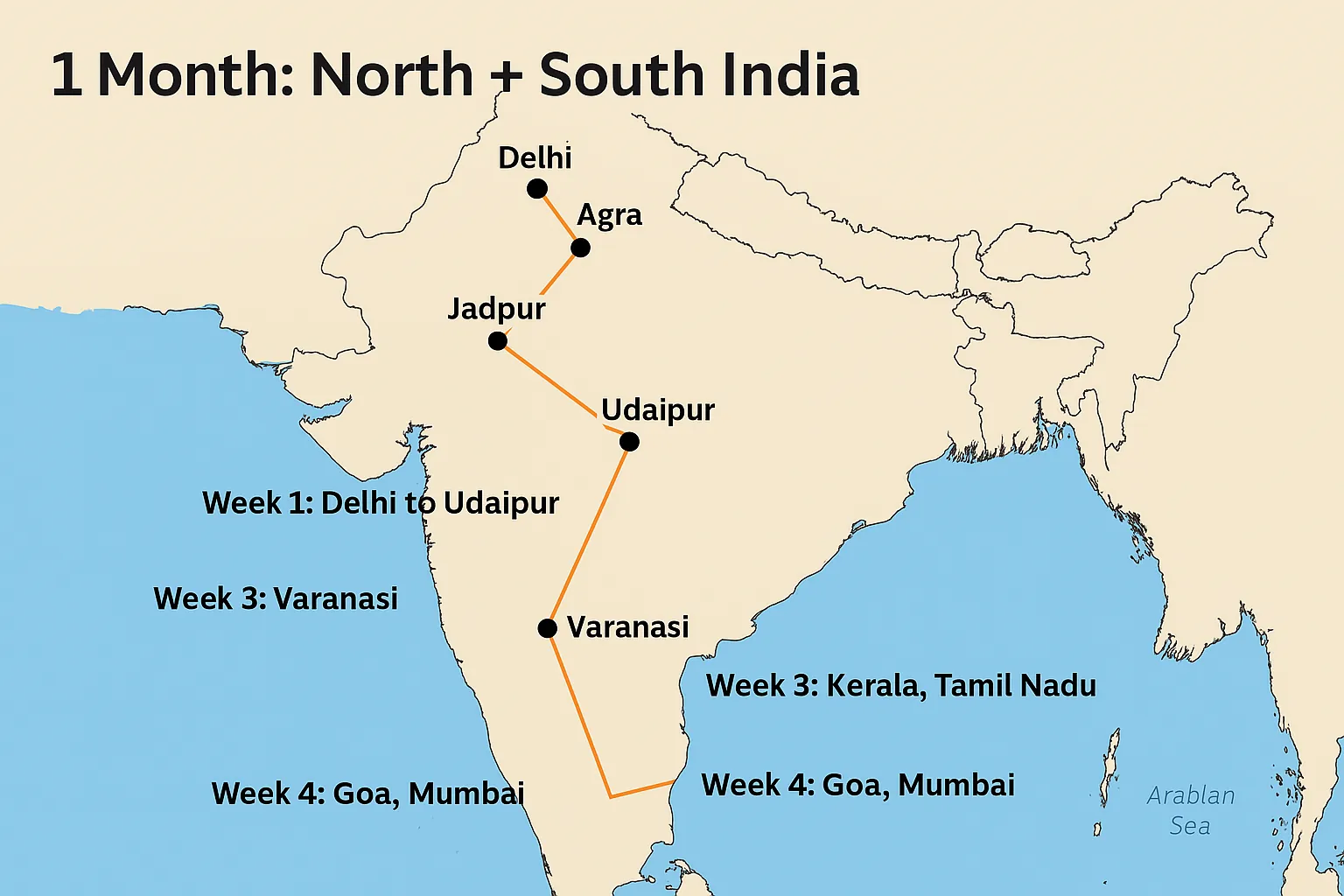
Best for: Travelers who want to experience India’s cultural variety from mountains to beaches.
Route: Delhi → Agra → Jaipur → Jodhpur → Varanasi → Kerala → Tamil Nadu → Goa → Mumbai
Week 1–2: North India–Golden Triangle plus Jodhpur and Udaipur (as above).
- Add Rishikesh for yoga, Ganges river views, and peaceful mountain vibes.
Week 3: South India – Kerala
- Cruise the Alleppey backwaters on a houseboat.
- Visit Munnar’s tea plantations and Periyar Wildlife Sanctuary.
Week 3–4: Tamil Nadu + Goa
- Marvel at Madurai’s Meenakshi Temple and Mahabalipuram’s Shore Temple.
- Fly to Goa for beach relaxation, Portuguese heritage, and a variety of delicious seafood.
Final Days: Mumbai
- Explore colonial architecture, bustling markets, and street food before departure.
(See full details in our India Itinerary Guides)
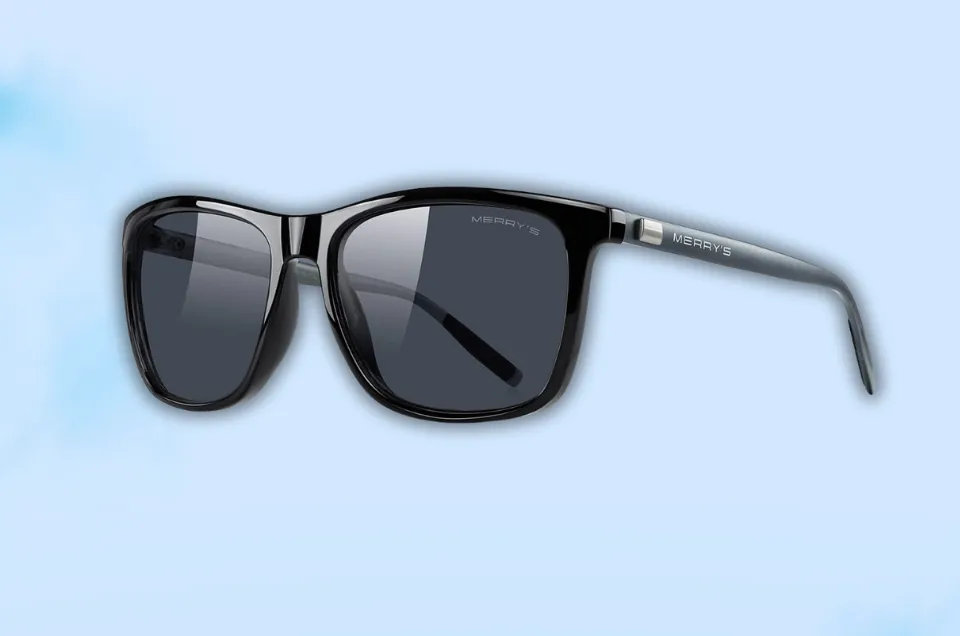
Buy Sunglasses for Men & Women
Map & Route Overview
(Here you would insert a simple route map showing major stops and connections—ideal for SEO and user engagement.)
Tips for Planning Your Itinerary:
- Travel Time Matters: Trains and buses can take longer than expected—always check schedules and plan buffer days.
- Seasonal Adjustments: Avoid Rajasthan in peak summer; visit Kerala during the dry season for backwaters.
- Mix Big Cities with Small Towns: Some of India’s most memorable experiences happen in rural areas.
With the right route, India transforms from a huge puzzle into an incredible story that unfolds one destination at a time.
Budget & Money Tips
Traveling in India suits almost any budget. Whether backpacking or seeking luxury, India offers great value.
Average Daily Costs
(These are approximate and will vary by city and season)
- Backpackers: ₹1,500–₹2,500 per day – Budget guesthouses or hostels, local eateries, sleeper trains, or buses.
- Mid-Range Travelers: ₹4,000–₹7,000 per day – Comfortable hotels, domestic flights, guided tours, dining at mid-range restaurants.
- Luxury Travelers: ₹12,000+ per day – Heritage hotels, private drivers, luxury trains, fine dining, and premium tours.
Currency & ATMs

The currency in India is the Indian Rupee (₹). You’ll find notes in denominations of ₹10, ₹20, ₹50, ₹100, ₹200, ₹500, and ₹2,000, though ₹2,000 notes are not commonly seen.
- ATMs are easily accessible in cities and large towns, but they can be more challenging to locate in rural areas.
- Most ATMs let you withdraw between ₹10,000 and ₹20,000 per transaction.
- Carry small notes for street food, auto rickshaws, and neighborhood shops.
💡 Tip: Many places now accept UPI (Unified Payments Interface) apps like Google Pay or PhonePe—fast, cashless, and widely used.

Buy Ceptics Universal Travel Adapter, 35W International Power Adapter
Negotiating in Markets
Bargaining is common and expected in street markets, souvenir shops, and with some local transport services.
- Start by offering about half the initial price quoted, then work your way up to a fair middle ground.
- Stay polite and smile—negotiation is as much about attitude as it is about price.
- Fixed-price stores, supermarkets, and most malls do not allow bargaining.
Final Advice:
- Keep emergency cash aside in case ATMs aren’t working.
- Split your money into different pouches or bags for safety.
- If carrying larger sums, use a money belt or secure travel wallet.
For detailed ways to save without missing out, check our Budget Travel Tips for India guide.
With these budget and money tips in mind, you’re ready to immerse yourself in the vibrant culture and experiences that India offers. Next, let’s look at essential safety advice and cultural etiquette so you can explore with confidence.
Safety & Cultural Etiquette
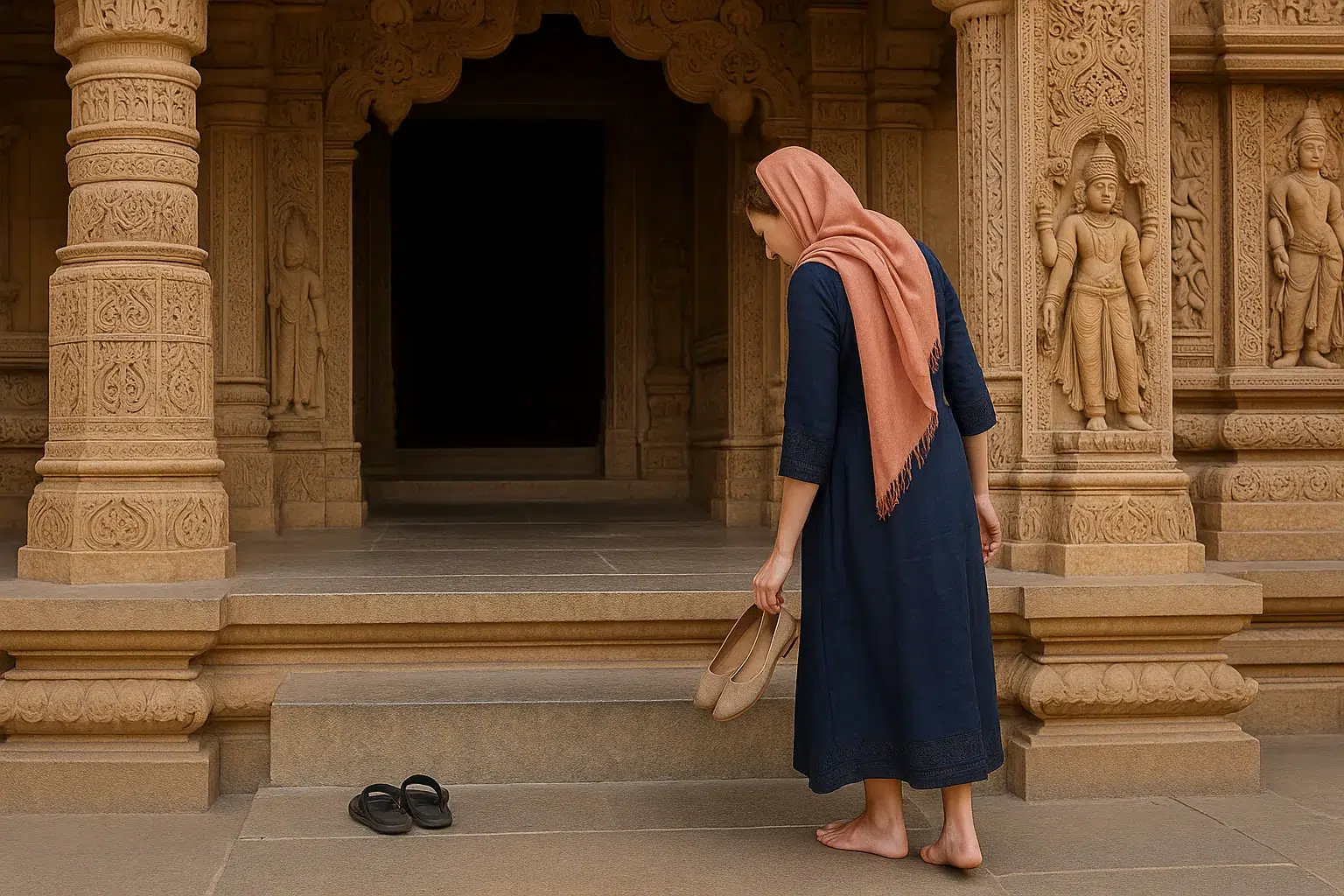
India is a welcoming and generally safe country, but, like in any destination, being aware and prepared helps ensure a smooth journey. Knowing local customs and how to respond in common situations will help you feel at ease and be respectful during your trip.
- Choose well-reviewed places to stay in central locations, especially if you’re traveling solo.
- Share your itinerary with friends or family back home and check in regularly.
- Avoid wandering alone in poorly lit or isolated areas at night.
- For women, traveling during the day and using trusted transportation services (such as Ola, Uber, or prepaid taxis) is generally safer.
- Always trust your instincts—if something feels wrong, step away.
Common Scams to Avoid
- Overpriced taxis or tuk-tuks – Always insist on using the meter, or agree on a price before starting.
- Fake ticket offices or guides – Buy tickets only from official counters or websites.
- Overfriendly “helpers” – Some may offer assistance and then demand high tips.
- Gemstone or carpet scams – Be cautious if pressured to buy expensive souvenirs.
- 💡 Tip: Staying polite but firm is the best way to handle these situations.
Dress Code by Region
Dress styles in India vary, but modest clothing is generally appreciated, especially outside major cities and at religious sites.
- North India – Light cottons in summer; warm layers in the Himalayas. Women may prefer to cover their shoulders and knees, especially in temples or smaller towns.
- South India – Light, breathable fabrics; traditional attire is common, so modest clothing is recommended.
- At religious sites, remember to remove your shoes before entering. In many temples and mosques, it is customary to cover your head with a scarf or shawl.
In short:
India rewards travelers who are alert and open to local customs. Being culturally sensitive helps keep you safe and leads to warmer connections and deeper experiences.
For more practical tips and real-life stories, check out our Safety & Etiquette in India guide. Traveling with cultural awareness will help you blend in, connect with locals, and make the most of every moment with confidence.
Essential Travel Resources
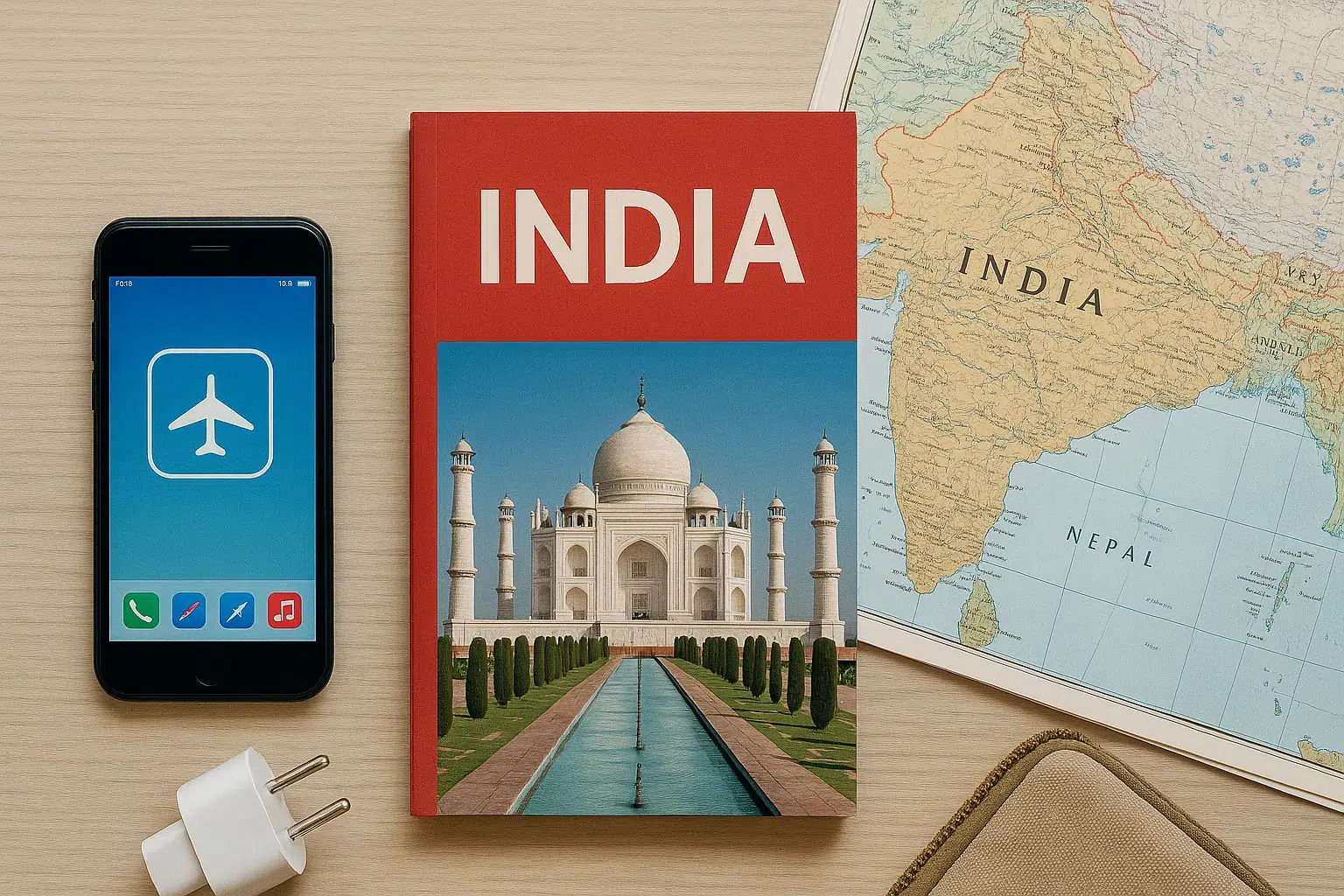
Having the right tools at your fingertips makes traveling in India smoother, more affordable, and more enjoyable. Here are some tried-and-tested resources to help you plan and navigate your journey.
Best Booking Sites
- Transport – IRCTC for trains, RedBus for buses, and MakeMyTrip or Cleartrip for a mix of trains, flights, and hotels.
- Hotels – Booking.com and Agoda for a wide range of accommodations, from hostels to luxury resorts.
Recommended Travel Apps for India
- Ola / Uber – Reliable ride-hailing apps for cities.
- Google Maps – Essential for navigation, even offline in some areas.
- Zomato – Restaurant reviews and delivery options.
- Paytm / Google Pay / PhonePe – For quick, cashless payments.
Packing List Quick Tips
- Lightweight, breathable clothes for most regions; warm layers for the Himalayas.
- A scarf or shawl for temple visits.
- Power bank and universal travel adapter.
- Reusable water bottle with a purifier.
For a comprehensive checklist, refer to our India Packing List guide to ensure you don’t forget the essentials.
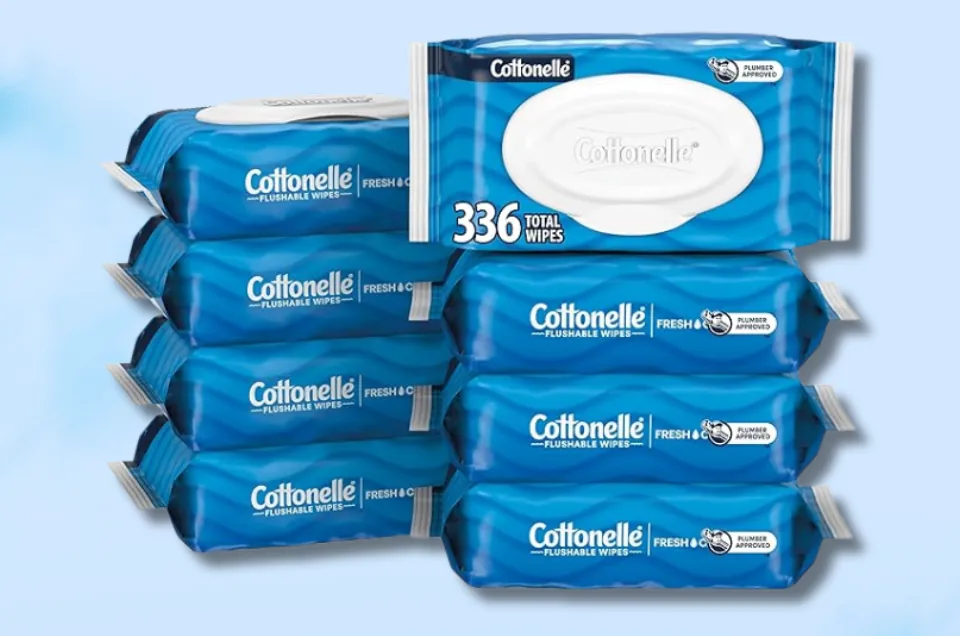
Buy Cottonelle Fresh Feel Flushable Wet Wipes
Conclusion & Call-to-Action
Your adventure across India is about to begin. India isn’t just a destination—it’s an experience that lasts a lifetime. From the Himalayas to Kerala’s beaches, ancient temples to busy street markets, each day brings something new. The country’s diversity invites endless exploration.
Use this Ultimate India Travel Guide as your foundation, but dive deeper into our destination-specific guides and itineraries for tailored advice. Whether you’re planning a week-long Golden Triangle trip or a month exploring North and South India, our cluster articles will help you fine-tune every detail.
Remember: Planning a trip to India, staying flexible, and using our tips will set you up for a successful and enjoyable trip in India. Share with friends, sign up for updates, and start your adventure well-informed.
More Read Our India Blog
Baba Budan Giri Karnataka || Chinnasalem Tamil Nadu || Bhadra Wildlife Sanctuary Safari || Coffee Museum Chikmagalur || Rajkot Tourist Places || Chikmagalur in 3 Days || Skydiving in Narnaul || Go Karting in Ahmedabad || Tourist Place In Begusarai || Gurudwara in Jaipur || Places to Visit in Murshidabad || Dooars Tourist Spot
FAQs about India Travel Guide
Q: What is the best time to visit India?
A: October to March offers pleasant weather across most regions, while summer is ideal for hill stations and the monsoon for lush landscapes.
Q: Do I need a visa to travel to India?
A: Most travelers need a visa. The easiest option is the e-Visa, which is available online for stays of 30 or 90 days.
Q: Is India safe for solo travelers?
A: Yes, with basic precautions—choose safe areas, use trusted transport, and respect local customs.
Q: How much should I budget for a trip to India?
A: Backpackers can spend around ₹1,500–₹2,500/day, mid-range travelers ₹4,000–₹7,000/day, and luxury travelers ₹12,000+/day.
Q: What are the must-visit destinations in India?
A: Popular picks include the Golden Triangle, Kerala backwaters, Rajasthan’s forts, Goa beaches, and the Himalayan hill stations.
Q: Which vaccinations are recommended for travel?
A: Commonly advised vaccines include Hepatitis A, Typhoid, and Tetanus. Consult your doctor for personalized recommendations.
Q: Can I drink tap water in India?
A: It’s best to avoid tap water. Stick to bottled, filtered, or purified water to prevent stomach issues.
Q: How do I get around within Indian cities?
A: Use metros in big cities, tuk-tuks for short rides, and Ola or Uber for safe and reliable travel.
Q: Is English widely spoken in India?
English is widely spoken in cities and tourist areas. Learning a few local phrases is still helpful and appreciated by locals.
Q: What should I wear when visiting religious sites?
A: Dress modestly—cover shoulders and knees. Remove shoes before entering, and women may need to cover their heads in certain temples or mosques.
Q: How can I stay connected to the internet while in India?
A: Get a local SIM card from providers like Jio or Airtel, or use portable Wi-Fi devices.
Q: What is the tipping culture in India?
A: Tipping is customary—around 5–10% in restaurants, small amounts for porters and drivers.
Q: Are credit cards accepted everywhere in India?
A: Cards are widely accepted in cities, but carry cash for small shops, markets, and rural areas.
Q: How far in advance should I book train tickets in India?
A: Book as early as possible—up to 120 days in advance—for popular routes and peak seasons.
Q: Which Indian festivals are worth planning a trip around?
A: Holi, Diwali, Pushkar Camel Fair, Onam, and Durga Puja offer unique cultural experiences.

